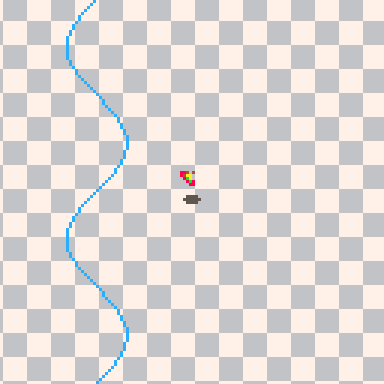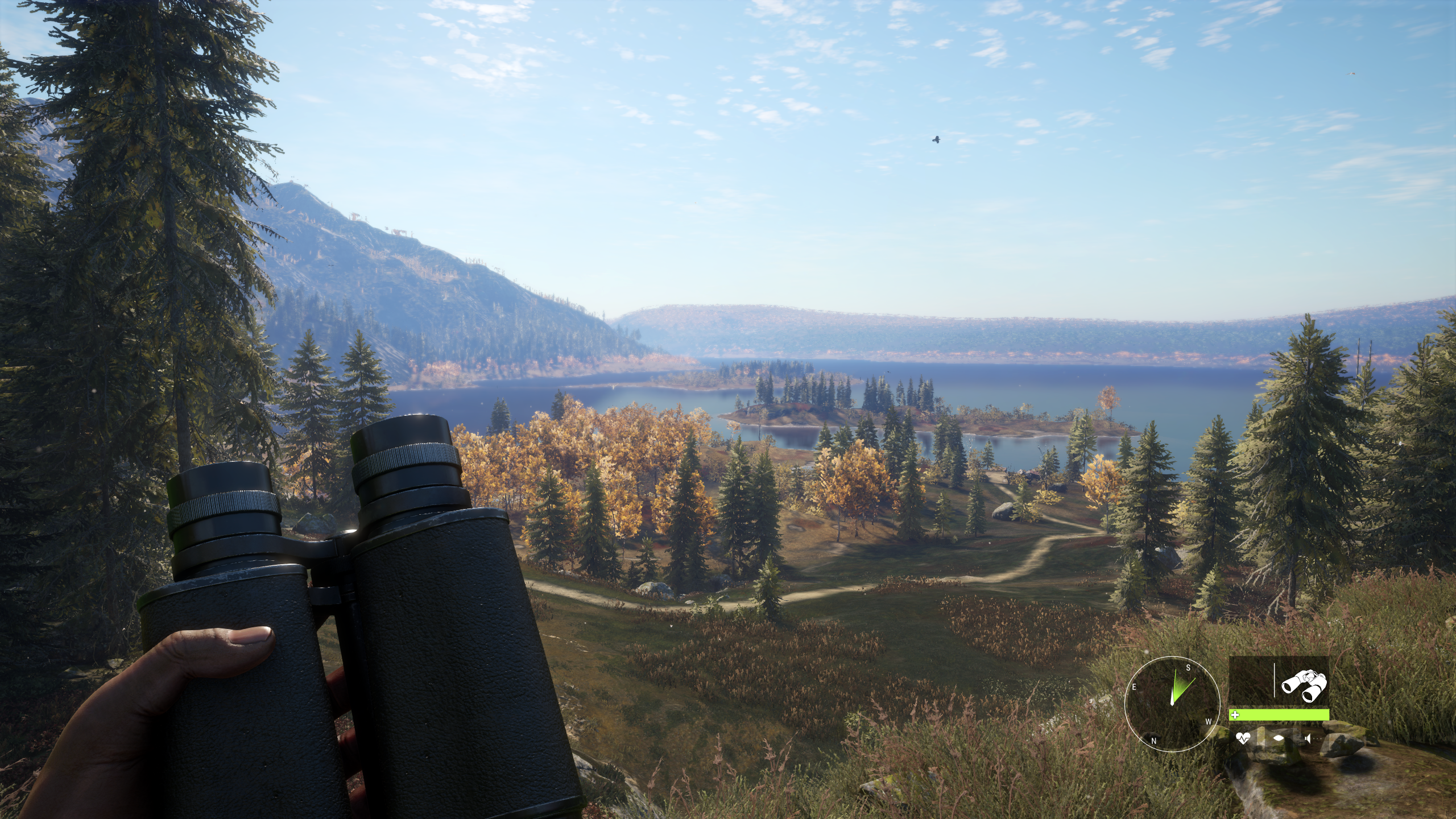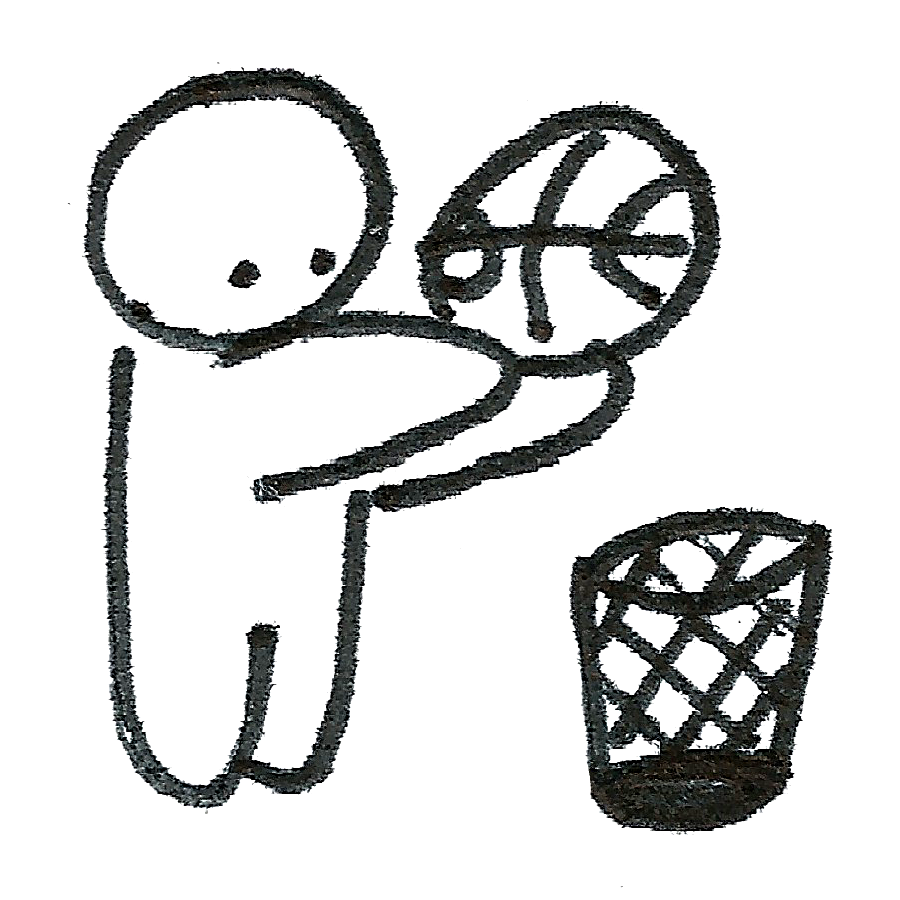I pay my rent by mailing a check every month. Being the first month of a new year, January is a risky time; I almost always write the wrong year out of habit. This year was an exception! I have naturalized seamlessly into 2022, and saved myself a check. Could this be like the groundhog and his shadow? I did not look back, and spared myself an extra month of 2021. At the very least, this checkbook will now last me an additional month. Remember this and rejoice, myself several years in the future!
I took an extended vacation in December, but now that I’m back at work the tires are hitting the road. Every day is busy, but fortunately I have established a good routine. My meals are prepped, my shelves are dusted, my crops are watered. I have even been regularly programming in my free time again, after a months-long freeze. I’m embarrassed to admit it, but I think that part of my ability to make games on my own has been broken, and it has been broken for a long time. So I am reteaching myself, almost from scratch, using a new set of tools. PICO-8, a “fantasy console” with a strict (but thoughtful!) set of constraints and fully embedded code/art/sound editor has made me love digital doodling anew. Most helpfully, almost every game made in this engine can have the hood opened up and assets observed or remixed. One of the things that makes learning game development so hard is that there are very few opportunities to play something and then transparently see how it was accomplished. Anyone can find bits and pieces in tutorials or forums, but PICO-8 is so small and so open that I can read a whole projects’ source very quickly. In fact, the code caps out at 8192 words (or “tokens”) which would be exceeded by just putting together a couple of these newsletters. I do have to take care not to develop some bad habits (the code has to be typed out entirely in lowercase!! capital letters are not allowed!!!) but I am still working with “real” code at my day job so I think I will be okay.

How about the games I have been playing? I engaged with two games this month: one that I have never heard of someone playing, and another that everyone has arguably been hearing too much from. You can probably guess that the latter is Wordle, a simple world game that blew up thanks to an engenius game result receipt. Many people are annoyed by the flood of pictographic cyphers, but if you play the game once you know how to read it and can commiserate in a digestible drama that communicates an entire story in an instant, and is made relatable since every player tackles the same challenge every day. It’s like how an entire baseball game can be understood from the scoreboard, but more intimate. I love seeing people’s Wordles. I have gasped, I have shaken my head, I have pitied, I have cheered. A stranger’s Wordle means nothing to me, but my friends and family are my home team and I root for them at every game. It is not cooperative, nor is it competitive. Wordle occupies this strange middle space that I have not seen defined in games scholarship before. It is simply togetherness. What a romantic game, no?
The other game is called theHunter: Call of the Wild, a five year old hunting simulator by Swedish developer Expansive Studios. I saw a completely random screenshot of the game on Twitter which piqued my curiosity and led to me looking it up. What I found were several negative reviews disparaging how boring it was to wander the woods for hours without killing any animals. The consensus was united: pretty graphics but gameplay too obtuse to actually engage with. Perfect. I ordered a copy right away.

theHunter is a hiking game. That’s not how it sells itself nor thinks of itself, but it’s there to be that if you’d like. Give it a willing curiosity, and the depth of the scene can take your breath away. The nature reserves are massive, lush with endless shrubs and rolling fog, with volumetric lighting casting through the trees. Despite being digital, there is a good approximation of the visual joys of taking a hike. The game is lovely at just being “a place to walk.” There are even cheeky “lore drops” where bits of poetry and history dot landmarks. Someone could happily play this game for dozens of hours by just walking around and looking. Whether you are the kind of person who would enjoy that or not, you probably already know.
Sooner or later everyone will reach a threshold where, without any mechanical complications for walking, there is no meaning to what you are looking at or exploring. Fortunately, there is an entire hunting videogame designed to augment exactly that. Through the eyes of a hunter, this pretty scenery transforms into a complex maze filled with subtle ambiguities. Searching for prey within the dense foliage demands an attentive eye – and is a significantly more difficult task than you could possibly imagine – but the true key that unlocks the game is noticing that animals trample grass underfoot. Recognizing that, the overwhelming foliage isn’t just something to look through, but to look at. Really, truly, closely look at. Every blade of grass can be interrogated. Did an animal pass through here? Is this clump bent because it was pushed, or because the ground has a lump? Did this trail swerve left, or did it twist right? Seeking evidence of agency in the chaos of nature, every vista becomes a potential tale of a deer or moose or bear. One just has to learn how to read it, then, like a Wordle scoreboard, the drama unlocks.
Now I have to concede, while theHunter is derided as an obtuse game, it actually does hold your hand more than I am describing. By default loud UI elements highlight clues to animal whereabouts. The design of these hints are clever and elegant, but the blinking lights ran so counter to the calm hike I was initially taking that I shut them all off. I am glad that I did, because it forced me to look at the game closer and swim in the ambiguities of my prey’s subtle influences on the environment. The UI is more reliable, but in sharing so much inarguable information it actually makes the world feel emptier. “Is there an animal nearby?” is a better thought to have than “No, there is not” even when you have spent half an hour asking the former, rather than abandoning a location as soon as you reach the latter. Uncertainty creates mystery, and mystery creates curiosity, and that curiosity led me to look even closer at the marvelous artificial world around me. So what I am saying is, the reviews online were wrong. theHunter is not obtuse enough.
All the downtime is perfect for multiplayer sessions. First Person Shooter games are frequently loud, intense affairs that drown all opportunity for catching up. I love them, but they provide a connection very different from taking a hike with someone. theHunter is perfect for hanging out. The world is saturated in ambiguous possibility space, which means there is usually something to talk about or engage with, but it is fluid. You can talk, or you can walk, you can seek, or you can wander. It is possible to split up and broaden a survey of the land, or stand in a single spot and debate which direction a trail twists. And all the while there is room to complain about your week or ask about how pets are doing. What makes it better than a phone call is that there are nice sights to share and talk over, but also that there is the addicting thrill that at any moment the conversation will have to be put on pause and the subject turned to tactics as an animal is spotted.
Stumbling across a living creature is rare. Often half an hour will pass without one – but the moment when one does appear is always special. Whatever the circumstance, the overwhelming emotion of each encounter is one of “sudden opportunity.” Here is a creature, alive, fickle, unpredictable, and it is your goal at long last. The effort of all that searching, culminating in a decisive climax! But before you pull the trigger, you have to be ready. You may only have one shot, after all.
If the creature is far away then an exciting race begins. The starting guns are terrible, so you must get closer before it wanders away. There is no time to waste; an animal can disappear out of sight within seconds, even in the most open areas. You can’t run carelessly, though, because it will flee if you are detected. The best parts of a stealth game come to the surface here. The target must be closely observed, sightlines have to be considered, terrain must be negotiated, loud risks must be taken. There are no clear answers for what your prey can see, where you should step, or how close you should get. It takes hunches and the slow build up of experience and superstition to improve.
It is no less impactful when you bump into an animal that is closer than you expected. Once I turned the corner and came face to face with a moose. I was so startled that I fumbled the controls and fired a full clip into empty air as the moose ran off. While I was reloading, the animal turned around and charged straight into me. A health bar, which I had not even noticed before, took a considerable hit. I would later learn that this health bar is no joke – after falling from a firewatch tower and dying I was respawned over fifteen minutes away. Moments like these trained me to keep on edge. On another occasion, when a nearby bear flitted in and out of my sight I felt genuine fear and ran away. I had barely managed to kill some small game, there was no way I was going to take down a bear.
Finding and shooting an animal is seldom the end of the story. It’s actually the easy part – the hard part is following wounded prey. The initial weapons are not powerful nor accurate enough to dependably kill in a single blow, so you have to give chase in the hopes of taking another shot or exhausting the animal until it bleeds to death. I had not expected this part of the game, but it is the core challenge. Every animal in the game can easily outrun a human, so like in real life our only advantage is endurance. A wounded animal will sprint away, and then you have to carefully and quickly trace the tracks so you can spook it again until it expires, exhausted.
I have no love of hunting in real life. I think the hobby is repulsive. A digital simulacrum, though, I’m all good with. One of the beauties of play is that we can explore experiences without real harm. So I didn’t expect this part of the game to still leave me feeling so guilty. I have shot dozens of creatures at this point, tried to chase them when they fled, and then promptly lost sight of them. The challenges of tracking through the grass that I described before turn into a time sensitive imperative, and one that I regularly fail at. This persistent, believable digital nature preserve must be littered with unclaimed corpses. I would feel different if I had found them and harvested them for XP, then the act would have been worth something. The game actually quantifies pain; the less painful the death the more points you get. There’s a mechanical drawback too: when I fail a hunt I lose ammunition. Restocking ammunition costs money, and I am such a poor hunter that I risk never climbing out of virtual poverty. Better equipment means easier kills, but better equipment is expensive. As a result, I will probably never see 80% of this game’s systems. Yet I’m okay with that!
My time with theHunter has been about the journey. I have dissolved in full immersion for three hours, only to get a single kill and lose more money on bullets than I earned back. That doesn’t matter. Every minute was pleasurable and well spent. Hunting demands full attention to lush, ambiguous detail. Finally finding a creature is frequently dramatic. Preparing a shot encompasses the best elements of stealth and sniper games. Tracking a wounded animal forced me to do stuff I’ve never done before, and created poignant new emotions. It’s a game I would gladly spend dozens of more hours accomplishing nothing in.
Honorable Mentions
Skip-Bo
- Great card game. Played with family.
- Like Solitaire it walks a razor’s edge line of player agency where the choices feel very consequential, even though most of the process of playing can be very automated. The consequence makes the luck feel dramatic, and the automation makes the second-to-second routine feel productive and pleasurable.
Windjammers 2
- I haven’t been online much this month so I don’t know if people are talking about Windjammers 2 but it’s so gooooooooooooooooooooooood
If you have enjoyed reading this, consider signing up for the Saving Game newsletter! I will always post these on my website, but with the newsletter all future essays can go straight to your inbox.
